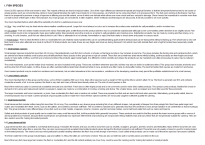Artisanal Fish Product Storage
Products of artisanal fish processing (dried, salted and dried, smoked) often undergo a period of storage prior to being sold, distributed and consumed. Such storage typically takes place at the processing location and/or at a market.
Product type, moisture content, design of storage facility, length of storage time, humidity, temperature and hygiene and sanitation practices can influence the likelihood of food loss and waste (FLW) during storage. Products can be stored for up to several months depending on these variables, particularly the type of product and its moisture content.
FLW occurs because of insect infestation (Dermestes spp, Necorbia spp), attack by animal pests such as rats, mould growth, physical damage and chemical changes brought about by oxidation lipids (fats). Insects and pests typically cause waste, as well as quality loss. Oxidation of fat brings about colour change in dried products, which can affect taste (rancidity) and the selling price of products value. Oxidation is also associated with nutrient loss.
Key Publications
Small scale processing of fish Types of fish species, fish products, processing technologies, processing methods, and suggestions for avoiding spoilage before, during and after processing, are discussed. This publication gives particular regard to small-scale producers in developing countries. | |
Post-Harvest Losses of Fish in the Tropics This publication seeks to explain what 'post-harvest' losses are, and the steps which can be taken to reduce them. | |
A Field Guide to the Types of Insects and Mites Infesting Cured Fish This field guide aims to provide basic information on the appearance and ecology of the main types of insects and mites that cause losses to cured fish. Loss control measures are described. |
More Resources
More Resources
27 February 2024
31 October 2023
05 September 2023










%201991.png)



